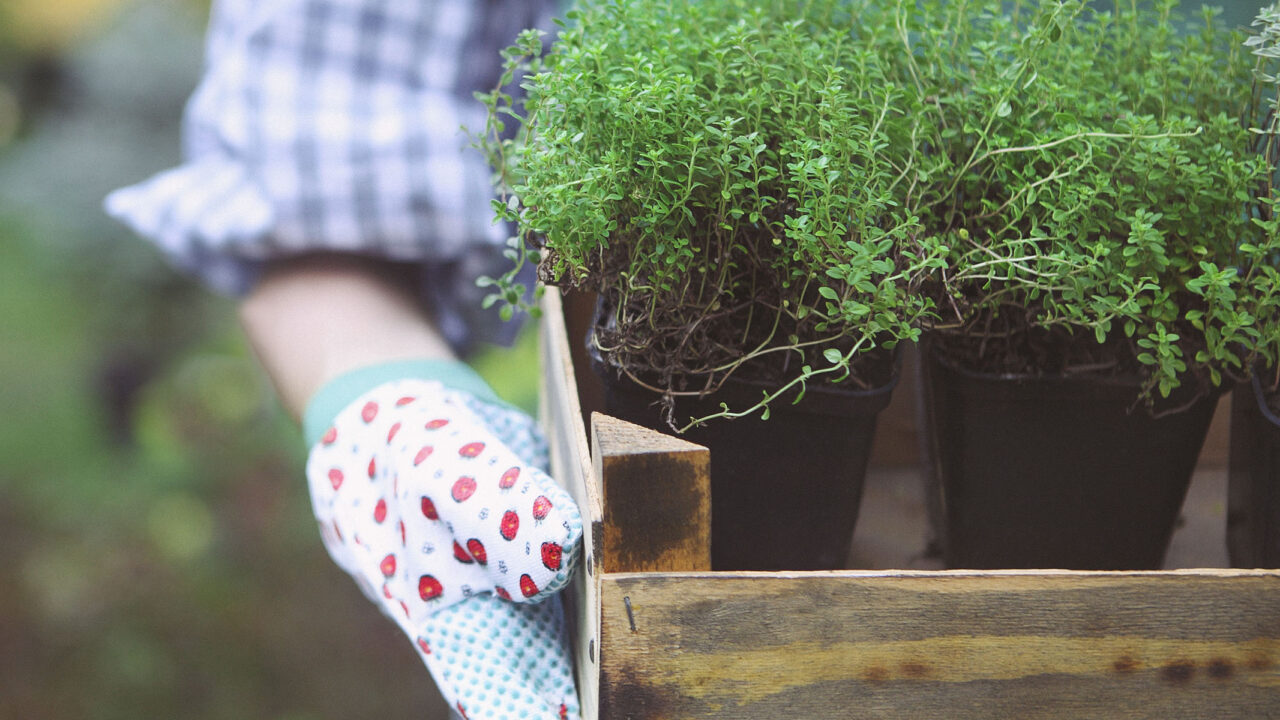Composting is an easy way yo turn everyday green waste into a nutrient-rich soil amendment! Cut down on home waste and save money on gardening materials by starting a compost pile.
Not sure where to start? We’re here to help! Let’s walk through three methods.
Step 1
Start the compost pile with a layer of browns.
TIP:If you have a lot of coarse organic materials, you may want to chop or shred them into smaller pieces. Smaller pieces decay faster.
Step 2
Add a layer of green materials. Try to maintain a ratio of 1 part greens to 3 parts brown.
Step 3
Add a shovelful or two of finished compost. This will add extra bacteria and fungi to get your pile off to a fast start.
Step 4
You can now mix the materials together with a pitchfork or shovel.
Step 5
Check for proper moisture. Use the “squeeze” test (below ) to be sure that your pile has the right amount of water for the composting process. Add water or additional dry material when necessary.
Step 6
Continue to build layers until the bin is full.
Step 7
Mix the pile after one week. Check for proper moisture and aerate the pile. Move coarse or less decayed material from the outside to the center. Adjust the moisture by sprinkling with water or adding dry material. Steam may be seen when you mix the pile.
Step 8
Continue to mix the pile after one week. Check for proper moisture. During this time the compost will begin to look uniform and dark brown in color. The pile will shrink as the composting process takes place. The pile is ready for curing when it does not heat up after turning, is neither too wet nor too dry, and most of the original materials are no longer recognizable.
Step 9
Allow the pile to cure for at least a few weeks until it looks mostly dark and crumbly and has a pleasant earthy odor. It is now ready to use as a soil amendment!
Moisture “Squeeze” Test
- If you cannot get one drop of moisture to squeeze out, it is too dry.
- If you get more than one or two drops, it is too wet.
- If you get one or two drops, it is the appropriate moisture level.
The Slow Method is similar to the Standard Method with the following modifications:
- No need to check for the proper mix or moisture! You build the pile with green or brown materials as they
become available. - If you add kitchen waste, it must be buried deep in the pile. Dig a hole in the top or side of the pile and cover the scraps with several inches of brown material or active compost. Foods left on the surface may attract pests or cause odors.
- After six months or more, finished compost will be found at the bottom or oldest sections of the pile. It may be collected and used as it is produced.
The Fast Method requires MUCH MORE of your time and energy, but you will get a finished product very quickly.
In this method, the composting process is closely watched to guarantee ideal conditions at all times.
The Fast Method is different from the Standard Method in the following ways:
- Extra space for gathering and storing organic materials will be needed.
- All organic materials are chopped or shredded before they are added to the pile. Both electric and gasoline-powered chippers and shredders are available. Lawnmowers, pruners, or hatchets can also be used to chop items.
- Check the temperature often with a compost or soil thermometer. In the summer months, it may be necessary to check the pile daily. With the Fast Method, very high temperatures (>140F) can be reached quickly. These temperatures are high enough to kill most weed seeds and disease causing organisms. However, some composting microbes may also be killed. If the temperature goes above 160F, cool the pile by turning or adding coarse, brown materials.
- Mix the pile every three days and check for proper moisture.
compost materials
Greens (high in nitrogen)
- Grass clippings
- Prunings
- Fruits and vegetables
- Houseplants
- Manure: e.g., cow, horse, pig, chicken or rabbit
- Kitchen scraps: e.g., stale bread, egg shells, coffee grounds (filters too), tea bags, citrus rinds fruit and vegetable peels
Browns (high in nitrogen)
- Leaves
- Bark
- Straw
- Woodchips
- Sawdust
- Newspaper (shredded)
- Brush (chopped)
- Corn stalks
do not use
- Bones
- Dog/cat feces
- Oil
- Grease
- Fat
- Wood ash
- Meat /fish scraps
- Dairy products
- Weed seeds
- Diseased plants
